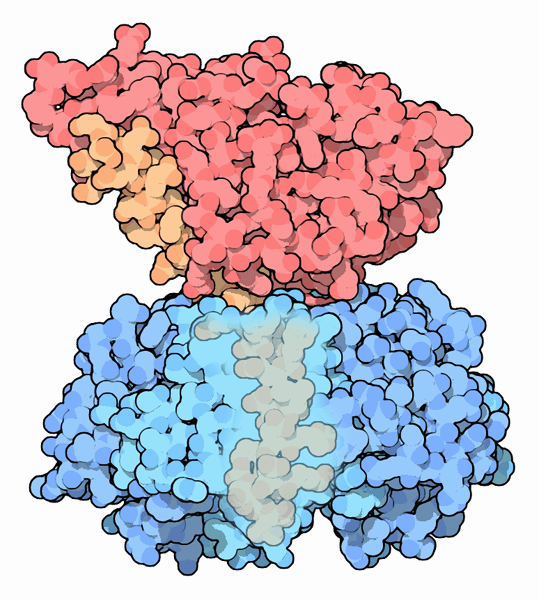|
Inhaltsübersicht | Nanomaschinen | Moleküle | Programme | Kurse | Fun | Links |
||
| > |
Cholera Toxin
Cholera Toxin
Bacteria pull no punches when they fight to protect themselves. Some bacteria build toxins so powerful that a single molecule can kill an entire cell. This is far more effective than chemical poisons like cyanide or arsenic. Chemical poisons attack important molecules one by one, so many, many molecules of cyanide are needed to kill a cell. Bacterial toxins use two strategies to make their toxins far more deadly than this.Building a Deadly Toxin
The first strategy used to build super-deadly toxins is to use a targeting mechanism to deliver the toxin directly to the unlucky cell. Cholera toxin, shown here from PDB entry 1xtc, has a ring of five identical protein chains, colored blue here, which binds to carbohydrates on the surface of cells. This delivers the toxic part of the molecule, colored red, to the cell, where it can wreak its havoc.The second deadly strategy is to use a toxic enzyme instead of a chemical poison. Enzymes are designed to perform their reactions over and over again, hopping from target to target and making their chemical changes. Thus, one enzyme can modify a whole cell full of molecules. Cholera uses this strategy once it gets inside cells. The toxic portion hops from molecule to molecule, disabling each one in turn, until the entire cell is killed.
Cholera Toxin in Action
The catalytic portion of cholera toxin performs a single function: it seeks out the G proteins used for cellular signaling and attaches an ADP molecule to them (for more on G-proteins, see the Molecule of the Month for March 2004 ). This converts the G-protein into a permanently active state, so it sends a never-ending signal. This confuses the cell, and among other things, it begins to transport lots of water and sodium outwards. This floods the intestine, leading to life-threatening dehydration.Next: Terrible Toxins
Last changed by: A.Honegger,
